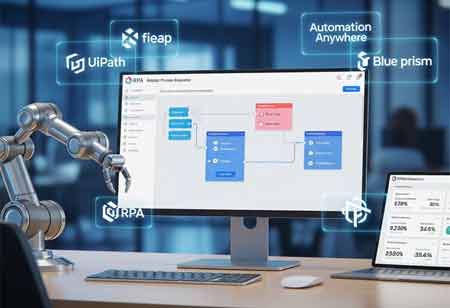THANK YOU FOR SUBSCRIBING
How Secure Coding Practices Safeguard APAC's Embedded Systems
In the APAC region, embedded systems are interconnected, driving innovation across industries.

By
Apac CIOOutlook | Saturday, March 23, 2024
Stay ahead of the industry with exclusive feature stories on the top companies, expert insights and the latest news delivered straight to your inbox. Subscribe today.
The rise of interconnected embedded systems in APAC demands robust security. Secure coding, regular assessments, and user awareness are crucial for safeguarding critical infrastructure and building trust in a digital future.
FREMONT, CA: In the APAC region, embedded systems are interconnected, driving innovation across industries. However, this connectivity introduces security risks. By following best practices like secure coding and regular security assessments, organizations can ensure the robustness of these essential devices. This proactive approach safeguards critical infrastructure, fosters trust, and paves the way for a secure digital future in APAC.
Practices Ensuring The Robust Security Of Embedded Systems In the APAC Region:
Elevating Security In Embedded Systems
Traditionally, security has often been an afterthought. However, for embedded systems, a security-by-design approach is paramount. This means integrating security considerations from the very beginning of the development lifecycle. Security architects and engineers should collaborate throughout the process, identifying potential threats and implementing robust security measures at the hardware and software levels. This proactive approach minimizes vulnerabilities and reduces the risk of costly security breaches later.
Regular Security Assessments
Staying ahead of the constantly evolving security landscape requires regular security assessments to address emerging threats. These assessments, conducted by qualified security professionals, thoroughly evaluate the system for vulnerabilities. Penetration testing, where ethical hackers attempt to exploit weaknesses, is a valuable tool in this process. By proactively identifying and patching vulnerabilities, organizations can significantly enhance the security posture of their embedded systems.
Secure Coding Practices
Secure coding practices during development minimize the introduction of vulnerabilities in an embedded system's core code, which is a critical security element. This includes using well-defined coding standards, employing secure coding libraries, and implementing memory management practices that prevent buffer overflows and other common exploits. Integrating static code analysis tools into the development cycle proactively identifies potential security vulnerabilities.
Firmware And Software Updates
Embedded systems often operate for extended periods, sometimes in environments where physical access is limited. This makes it crucial to implement mechanisms for secure firmware and software updates. Firmware Over-the-Air (FOTA) updates allow for secure updates to be delivered remotely, ensuring that devices remain patched with the latest security fixes. Secure boot safeguards device integrity by verifying the authenticity and authorization of code before execution.
User Education And Awareness
Security is not just about technology. User education and awareness play a vital role in protecting embedded systems. User training on robust password management and identifying suspicious interactions strengthens the overall security posture. Clear documentation on secure device configuration and usage should be readily available. By empowering users with security knowledge, organizations can create a more robust security ecosystem.
Building A Secure Future For APAC
By adopting these best practices, organizations in the APAC region can build a strong foundation for secure embedded systems. This will safeguard critical infrastructure and user data and foster trust and confidence in the connected world of embedded devices. As the APAC region continues to embrace the power of embedded systems, prioritizing security will be the cornerstone of a thriving and secure digital future.





